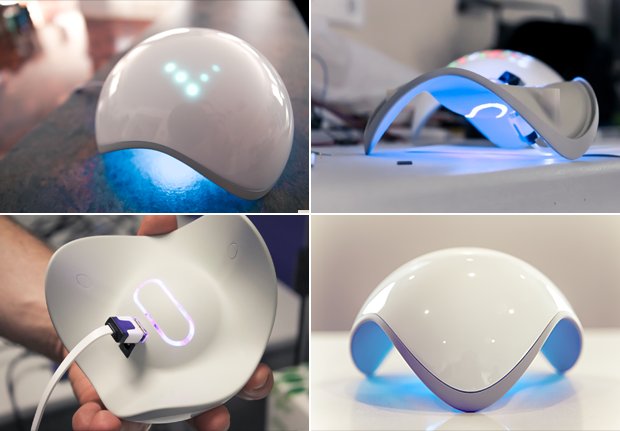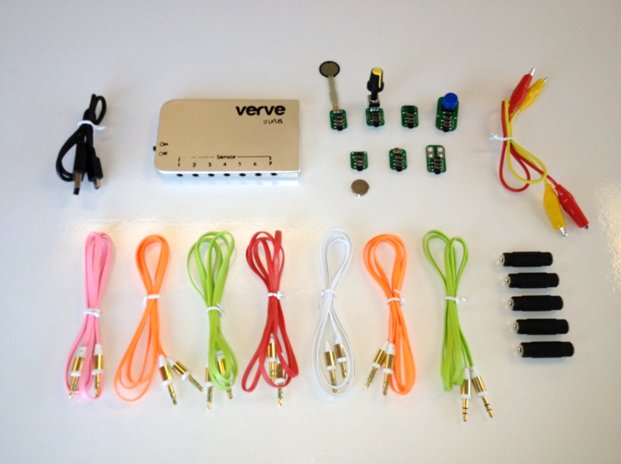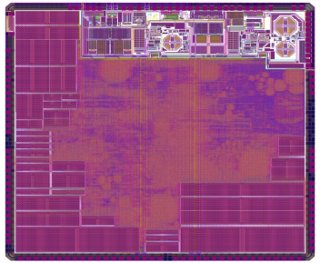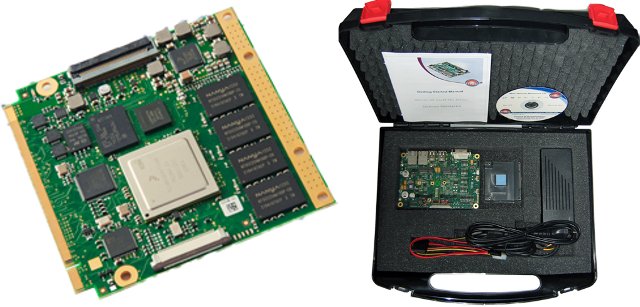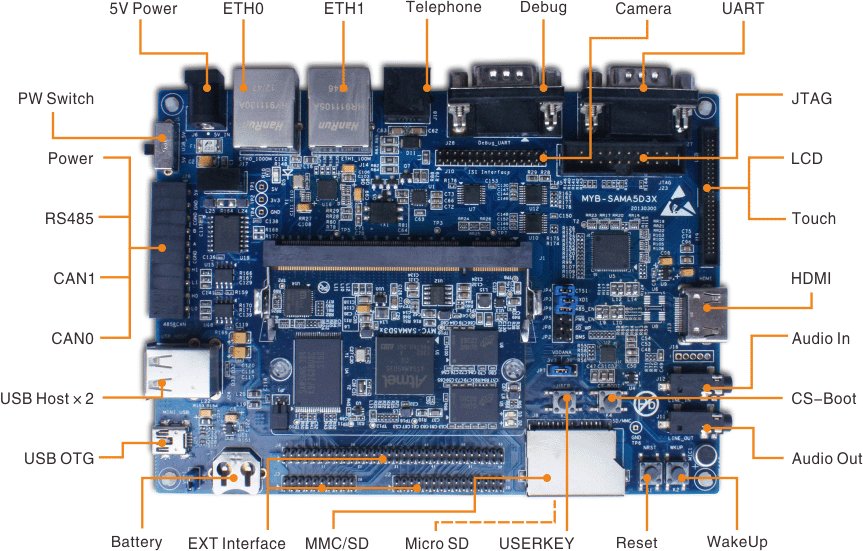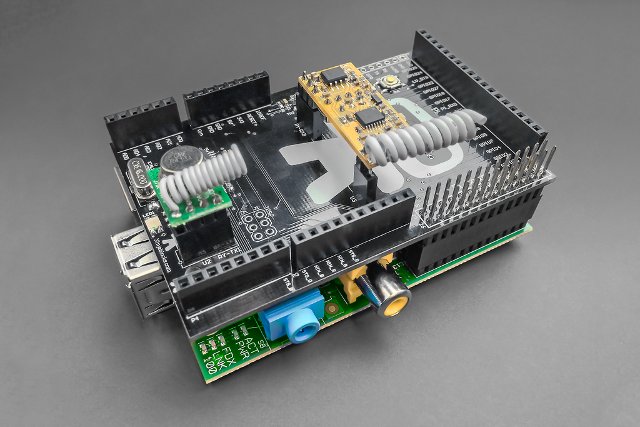Stephan Rafin has recently released a new XBMC image for Freescale i.MX6 based Wandboard development boards (dual and quad only) and Utilite computers. The images have been built with Yocto 1.5 (Dora) released last month, and are based on XBMC Gotham Alpha 9, the latest alpha before feature freezes. That means this is not a stable image just yet, but features won’t change, and this version of XBMC is now going though bug fixes. Stephan’s XBMC image includes the following: iMX6 hw accelerated decoding (VPU) for most standard formats iMX CEC support (for utilite only as wandboards are not properly wired) WIFI configuration thanks to network manager addon Support for HDMI/SPDIF/Analog sound outputs (including pass-through for HDMI and SPDIF) SMB/NFS/uPNP network shares and other standard XBMC features Bug fixes against previous version – No more transient black screens, trick modes (ffwd, frwd, ..) are now working, and smoother video playback. […]
Ninja Sphere Home Automation and Monitoring Platform
Ninja Blocks is an company providing open source hardware solutions for home automation. Their first product was called Ninja Blocks Kit which includes a Ninja Block (Beaglebone + Arduino based gateway, but they now also support the Raspberry Pi), sensors, sockets, cables, and a power supply, and works with Ninja Platform, an open source software framework. The goal was to simplify the process of developing automation applications by taking care of all low levels tasks such as electronics, embedded programming, network protocols.., and letting “end users” / developers focus on their application. The company is now working on a new version called the Ninja Sphere, including a “Spheramid” gateway, location waypoints (Bluetooth low energy tags), and smart power sockets. Here are the key features of the gateway: Processor – ARM Cortex A8 (probably Texas Instruments Sitara) Color LED Matrix Connectivity – Bluetooth, Bluetooth LE, Zigbee, and Wi-Fi USB Port – […]
Linaro 13.10 Release with Linux Kernel 3.12 and Android 4.3
Linaro has just posted a blog entry to announced Linaro 13.10 was available for download. This is normally supposed to occur on the last Thursday of the month, but it’s possible the release occurred on scheduled, and the blog post was late, or it may have been delayed because of Linaro Connect US 2013. You can access a summary of the event together with slides and videos of the sessions and keynotes when available. This release includes the Linux Kernel 3.12-rc5 (staging), Kernel 3.10.14 (LSK), Android 4.3.1, and Ubuntu Linaro 13.10 (still based on Raring). Android has been ported and updated to 4.3.1 from AOSP, and the OS can now boot using UEFI. More work has been done on ARM 64-bit (aka ARMv8 or Aarch64) for Android, the Linux kernel, and tools such as uprobes, o-profile, and ftrace. Some new hardware platforms I may have missed before have popped up […]
The VERVE Connects Sensors Your Computer for Gaming, Monitoring, and More
The VERVE is a little box that connects to one of the USB port of your Windows or Mac OS X computer (Linux support coming in 2014), and supports up to 7 sensors. It is available as part of a kit for $99 on Kickstarter. The kit includes the VERVE, a mini USB to USB cable, seven “sensors” (A force sensor, a push button, a light sensor, a potentiometer, a motion sensor, a magnet sensor, and a touch sensor), two banana clips for the touch sensor, seven cables to connect the sensors to the VERVE unit, and 5 extension blocks. Once the VERVE unit is connected to your computer, and the needed sensors are connected to the VERVE, you can launch the VERVE application to visualize the sensors data in real-time, and assign a mouse or keyboard action based on the sensor’s data level as shown below. There’s also an […]
Weightless Roadmap – Silicon, Modules, SDKs, Base Stations and Networks
The Weightless Standard aims at using the “white space” spectrum, previously used by analog TV broadcasts, for free M2M / IoT communication coupled with low power and cost-efficient hardware offering a range of over 10 km. Longer term the target is to reach $2 hardware cost, and $2 yearly servicing costs. Companies involved with Weightless include Neul, ARM, CSR and Freescale among others. You can read my previous post about Weightless for a longer overview. The Weightless Special Interest Group (SIG) has recently revealed the hardware roadmap for the new standard, which I’ll summarize below. Weightless Chip Neul Iceni, the first weightless silicon, was officially announced in February 2013. The latest version of the chip taped in May 2013 integrates UHF radio operating between 410 and 790 MHz supporting both TV white space and narrowband operation. It is suitable for low volume production applications. A third generation will be taped […]
MSC Q7-MB-EP4 Is a QSeven Starter Kit Powered by Freescale i.MX6
MSC Embedded, a company specialized in the design and manufacturing of embedded boards, has recently announced MSC Q7-MB-EP4, a complete Starterkit for the company’s Qseven modules based on Freescale i.MX6 Solo, Dual or Quad processors. The starter kit comes with a suitcase comprise of a heatspreader with heatsink, a 12V power supply, a cable kit (SATA data and power cable), a DVD, a getting started guide, and more importantly a 3.5″ Qseven carrier board (Q7-MB-EP4) with socket for Qseven modules Rev. 1.20 with the following specifications: CPU Module Interface – Socket for Qseven Rev. 1.20 compatible modules based on the Freescale i.MX6 Storage – 1x SATA connector + mSATA Socket with support for mSATA and mSATAmini cards, MMC/SD Card, and serial EEPROM for EPI/DP extensions Standard Interfaces: 7x USB 2.0: 4x USB (Series-A Jack), 1x USB internal pin header, USB on mini USB connector, USB at Mini PCI Express socket […]
MYIR MYD-SAMA5D3X Development Boards Feature Atmel ARM Cortex-A5 SAMA5D3 Processors
MYIR Tech, a company based in Shenzhen, and ARM Connected Community Member, has recently made available MYD-SAMA5D3X boards powered by Atmel ATSAMA5D3 ARM Cortex-A5 embedded MPU. Like many development boards, thise are composed of a baseboard coupled by a 200-pin SO-DIMM computer-on-module (CoM) featuring one of the four Atmel SAMA5D3 processor: SAMA5D31, SAMA5D33, SAMA5D34 and SAMA5D35. The boards all feature 512MB DDR2 SDRAM, 256MB Nand Flash, 16MB Nor Flash and 4MB Data Flash on board. Typical applications developed with these boards include control panel/HMI, smart grid, medical and handheld terminals, outdoor GPS, DECT (digital enhanced cordless telecommunications) phones, and more. MYD-SAMA5D3X boards specifications: Processor – Atmel SAMA5D31, SAMA5D32, SAMA5D34 or SAMA5D35 Cortex A5 up to 536MHz with 128KB of SRAM and 160KB of ROM System Memory – 512MB DDR2 SDRAM Storage – 256MB NAND Flash, 4MB Data Flash, 16MB Nor Flash, one MMC/SD card slot, and one microSD card slot Peripheral […]
Ninja Pi Crust Let You Connect Arduino Shields to the Raspberry Pi
There are quite a few projects using both the Raspberry Pi and an Arduino board and its shields together. These are working but the cabling may get messy. People have already found solutions to plug Arduino shields into the Raspberry Pi with products such as Cooking Hacks’ Raspberry Pi to Arduino shield connection bridge (40 Euros) or Open Electronics’ Raspberry Pi bridge (22.50 Euros). Those two boards are fine, but do not include an Atmel MCU, and use Raspberry Pi GPIOs directly, except for their ADC. Another solution is the Paperduino Pi, a DIY Arduino board that can be plugged on top of the Raspberry Pi, and compatible with Arduino shields. But if you want an Arduino board that can easily be stacked between the Raspberry Pi, and Raspberry shield, the upcoming Ninja Pi Crust by Ninjablocks may be an interesting option, especially if you plan to use the 433MHz […]



